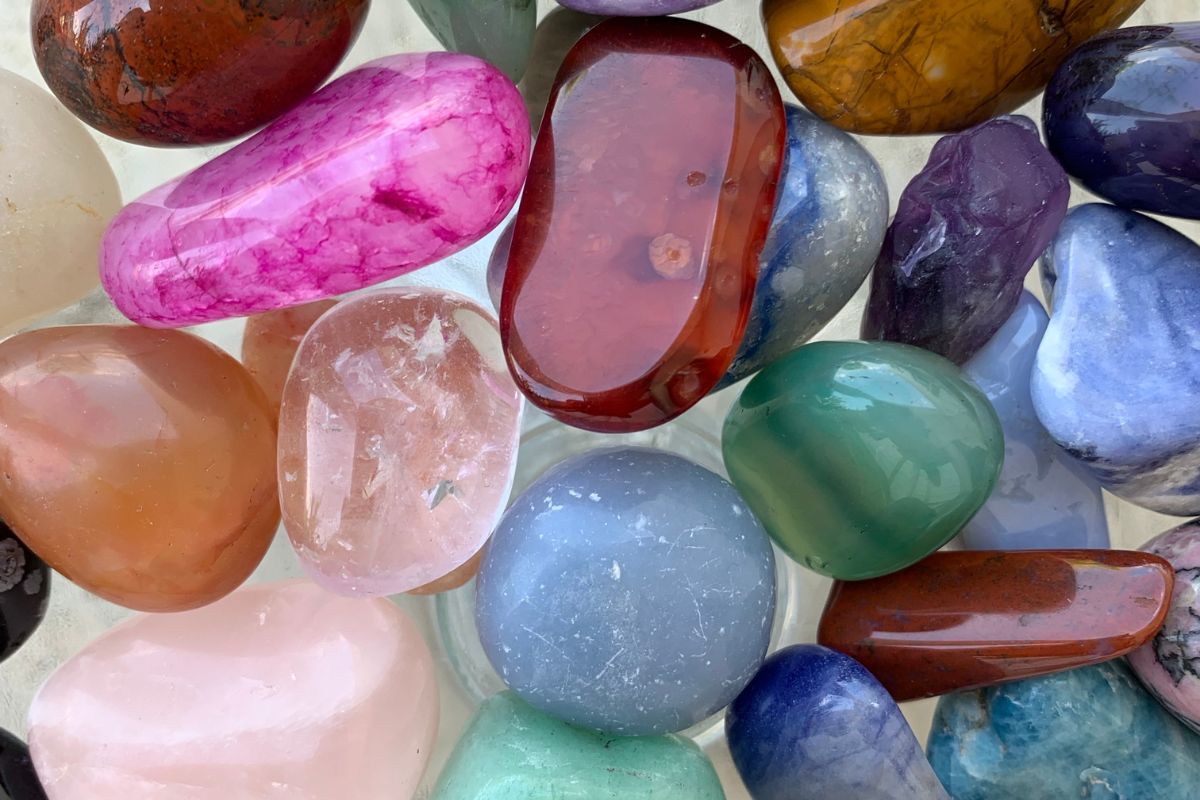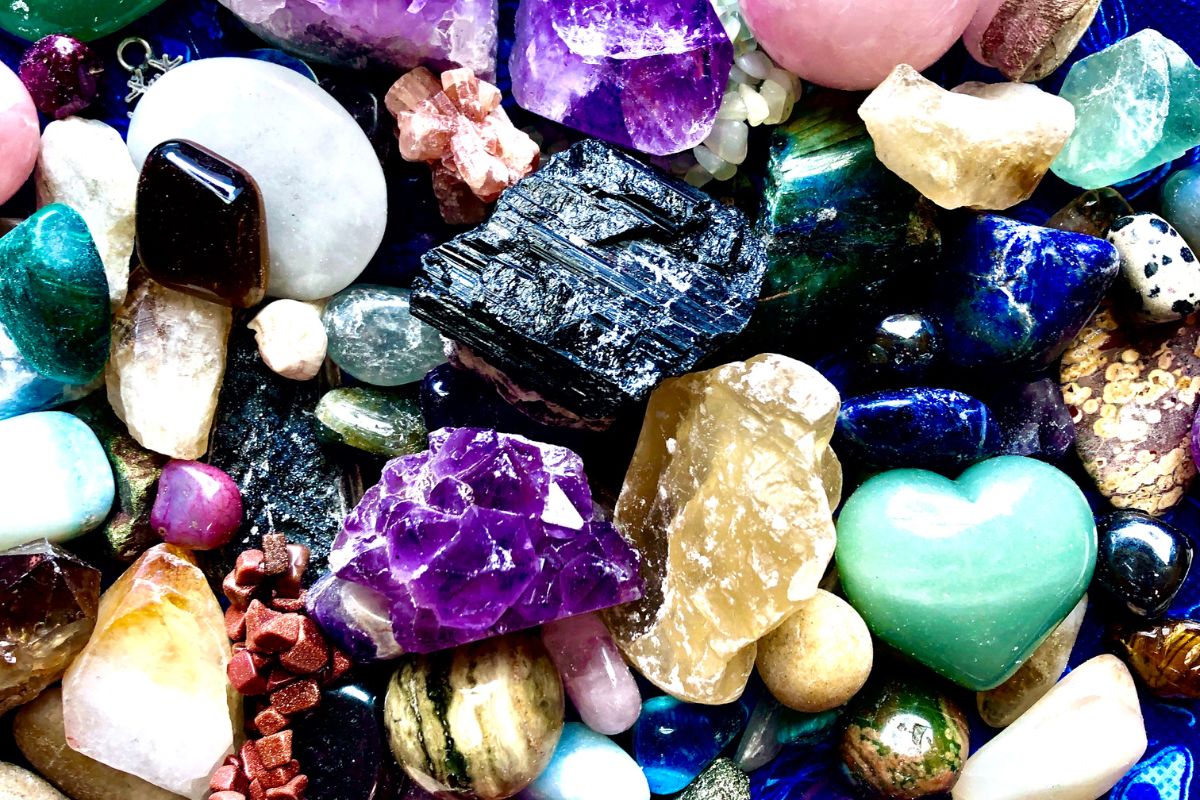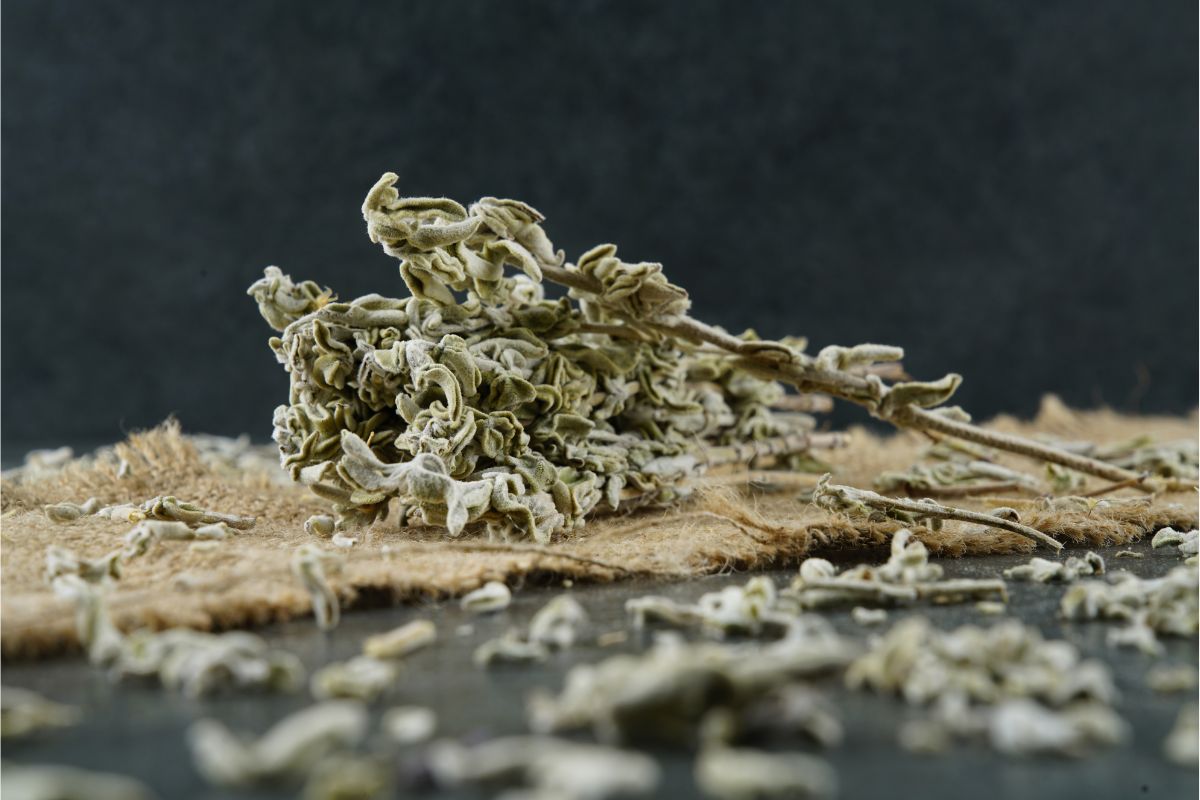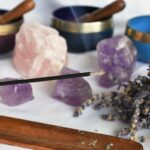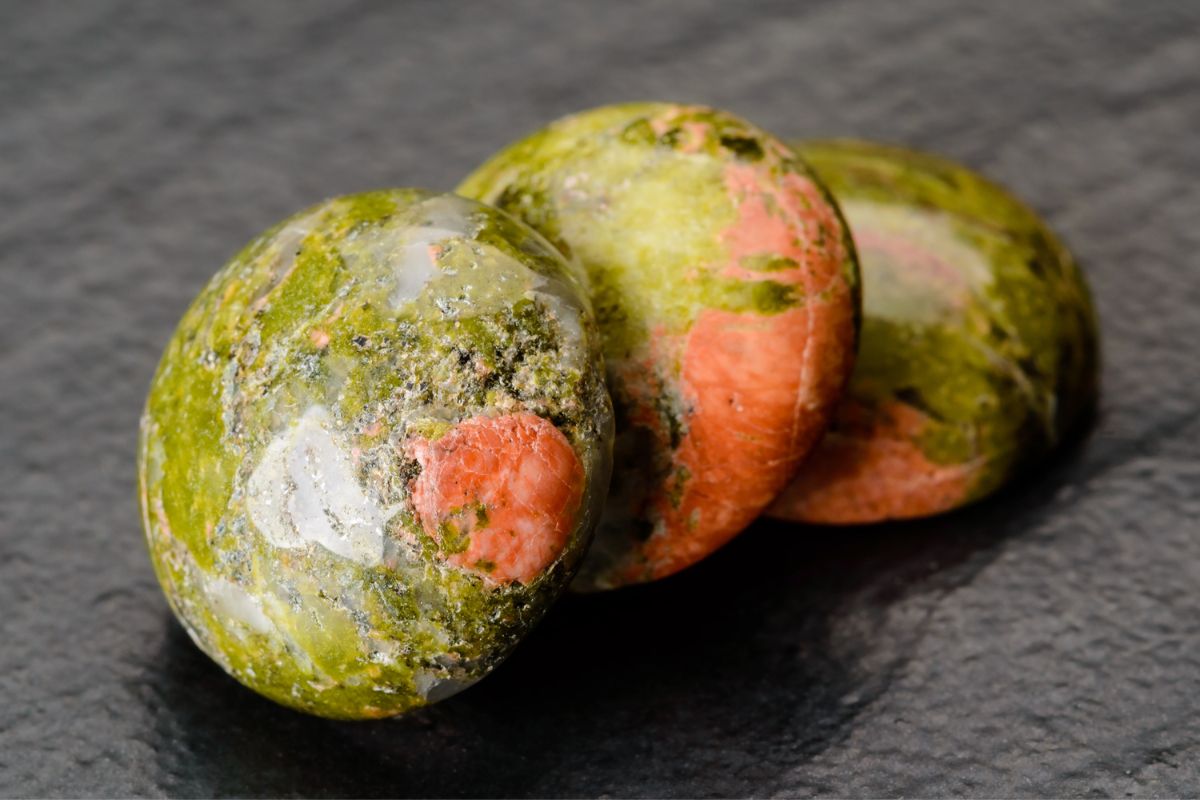Incense is a long-standing tradition in many cultures, used for its many spiritual and therapeutic benefits. But what is incense made of? Incense can be made from various natural materials, such as resins, herbs, and woods.
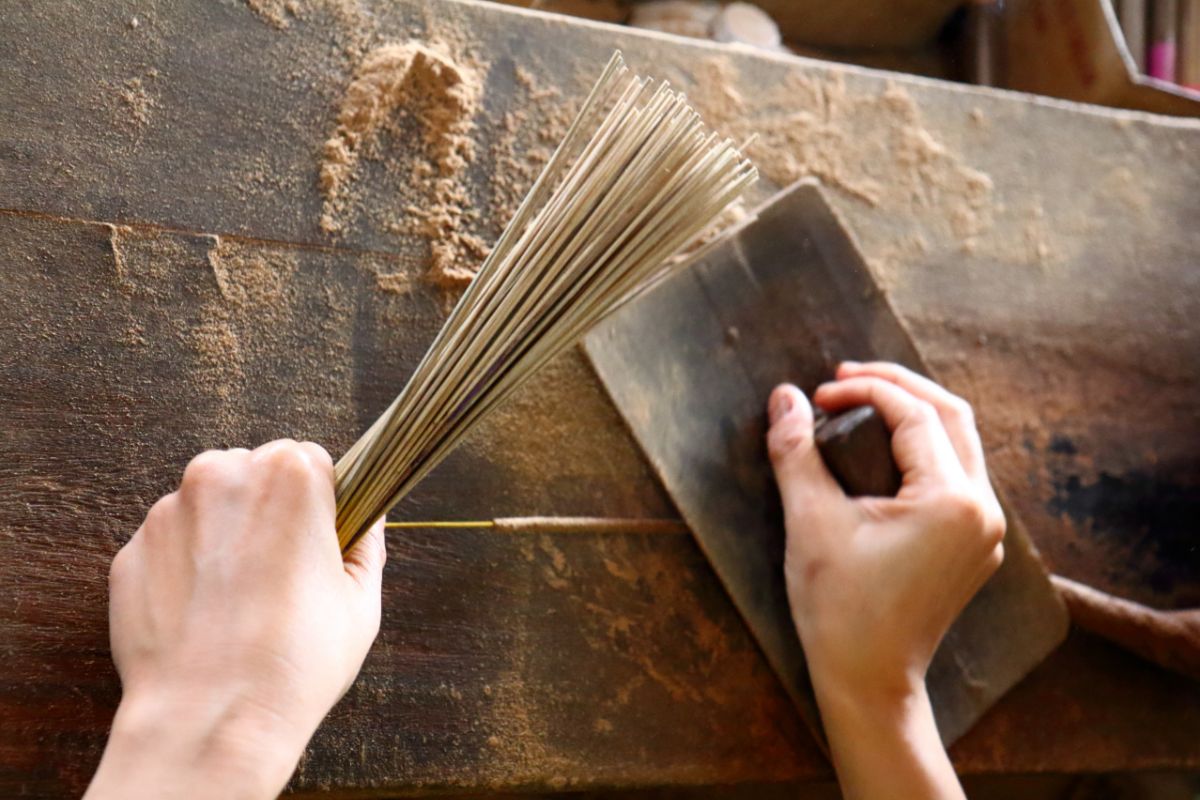
The ingredients used to make incense vary depending on the type of incense being produced and its intended purpose. In this article, we’ll explore some of the materials commonly used to make incense.
What Is Incense?
Incense is an aromatic substance that has been used ceremonially and aromatically for thousands of years.
Incense’s nearly universal application in many cultural, religious, and medicinal practices includes its use to mask unpleasant odors, enrich prayer and meditation, healing spiritual and physical ailments, connect the material with the spiritual world, invite divine beings into spaces, and empower intentions.
Incense is usually made from plant material such as resins (frankincense or myrrh), woods (sandalwood), bark (cinnamon), flowers (jasmine), or even herbs (sage).
All these materials are first harvested and then heat-processed to release aromatic molecules, which are then combined with carrier agents to form stick or cone incense.
There are a number of known health benefits resulting from its use, including aiding relaxation due to its anti-anxiety properties and reducing stress hormones.
What Exactly Is Incense Made From?
The use of incense has a long history, having been dated to ancient times in various cultures around the world.
Incense is made by combining aromatic materials and combustible binding materials to create shapes or blocks that can be lit and produce scents when they burn. Common aromatic ingredients used in incense making are plant-based, including resins, barks, seeds, roots, and flowers.
Examples of these ingredients include cinnamon, frankincense, and many others. The combinations of these ingredients vary greatly depending on the preferences of the makers, as well as traditions and regions.
Resins
Resins are one of the most popular ingredients used to make incense. Resins are natural substances that have a distinctive fragrance, often associated with spiritual and meditative practices.
Commonly used resins include frankincense and myrrh. They are typically heated over a charcoal burner in order to release their fragrant aromas.
Herbs
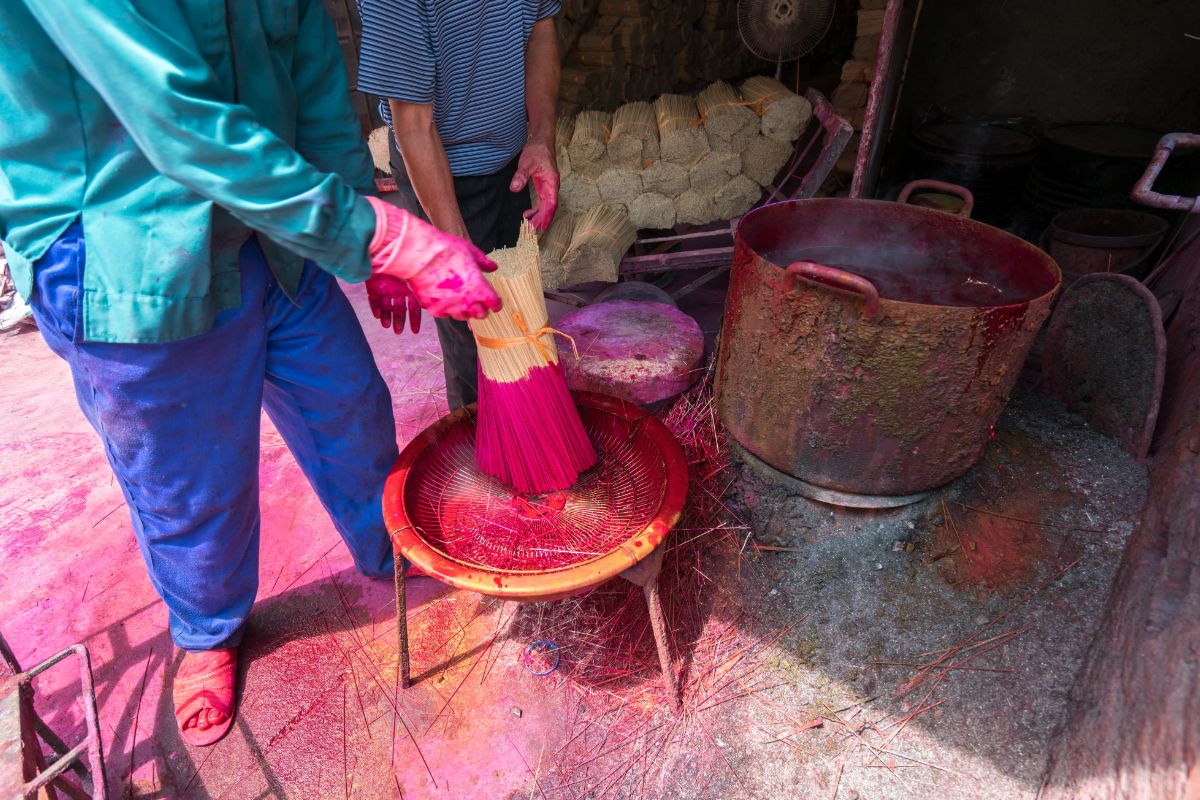
Herbs are also used to make incense. Commonly used herbs include sage, lavender, and cedar wood. The herbs can be dried and ground into a powder, or mixed with resins to make a paste. This paste is then shaped into cones or sticks, which are burned over coal to release their fragrance.
Woods And Barks
Woods are also commonly used in incense making. Woods such as sandalwood, juniper, and pine are popular, as they produce a pleasant fragrance when burned.
Why Do We Burn Incense?
Incense has been used for centuries in various forms of religious and spiritual practices, from Ancient Egypt to modern times.
In the Bible and in Hebrew worship, incense was burned daily to commemorate special occasions, to purify sacred spaces, and as an offering to the gods.
In addition to its religious uses, incense has also been used throughout history as a practical way to mask bad odors or create a pleasant atmosphere.
In centuries past it was sometimes used at banquets to create an inviting aroma or simply burned in people’s homes on a regular basis without any special occasion necessary.
In modern times, incense is commonly sold as natural room fresheners and an easy way to relax or get into a meditative state. It is often used with essential oils for added therapeutic benefits.
What Is The Best Way To Burn Incense?
Incense can come in many different forms: coils, cones, powders, or sticks. To use them properly, you need to gently ignite the product – whether it is with wooden matches or a lighter – without burning yourself or ruining your environment.
Typically speaking, gentle puffs will cause the flame to light up only the tip of the incense rather than its entire length.
As it burns down gradually along its length, you’ll be able to determine if more flames need to be applied or if you should blow it out for safety reasons due to lack of proper ventilation.
What Are The Benefits Of Burning Incense?
The benefits of using incense have become increasingly clear to those practicing mindfulness today. Inhaling incense helps relax the nervous system by stimulating the release of serotonin in our bodies, which leads to a calmer state overall.
Reducing Anxiety
Anxiety can have a huge impact on our lives, leaving us in a state of worry and unrest. Incense is one way to help ease the effects of anxiety and allow us to let go of overwhelming feelings (for more incense to help with anxiety, read here).
Incense has been used for centuries as an aromatherapy technique, as it’s believed that its scent has the ability to calm our nervous system. Burning incense allows us to create a more relaxed atmosphere, which helps encourage serotonin release in the brain, aiding relaxation.
Stimulating Creativity
If you’re looking to find your creative spark and jump-start your creativity, incense can be an excellent tool to use. By taking a few moments to surround yourself with this ancient practice, you can help create an atmosphere and environment in which it will be easier for your creative heart to open up.
Calm The Body And Mind
Incense can be an incredible aid when it comes to calming the body and shifting focus to the inner realms.
Burning incense has been used for thousands of years as a part of ceremonies, spiritual practice, and mediation, and helps connect us to the higher realms of consciousness. Incense releases aromatic molecules into the air that directly affect our emotional states.
Final Thoughts
Incense has been used for centuries to provide aroma and enhance moods. It is believed to have many benefits such as reducing anxiety, stimulating creativity, and calming the body and mind.
Different types of incense are available in coils, cones, powders, or sticks. When burning incense properly, you should gently ignite it with matches or a lighter and blow out any flames that appear.
- 15 Crystals That Cannot Be Exposed To The Sun - January 7, 2024
- Malachite Vs Fuchsite – Benefits And Uses - January 7, 2024
- Malachite Vs. Green Jasper: Benefits And Uses - January 7, 2024


